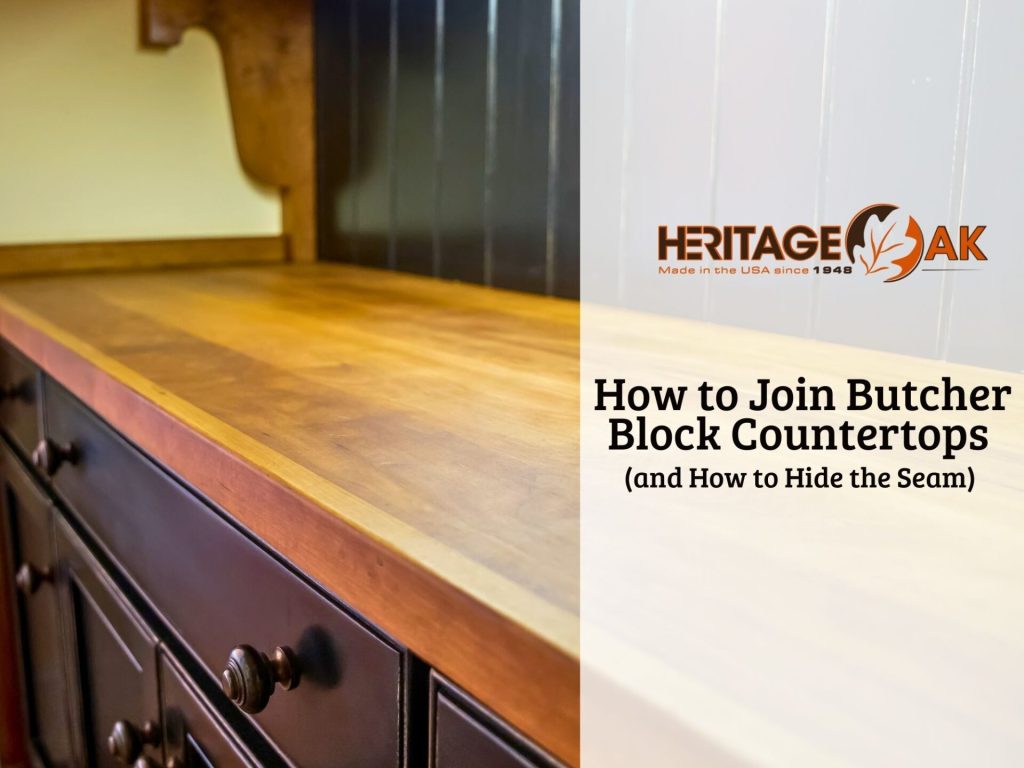
If you are considering upgrading your kitchen countertops, a butcher block may be a great option. Butcher blocks are a functional and aesthetically pleasing countertop that adds a warm and inviting feel to any kitchen. Futhermore, depending on your kitchen's layout, there might be areas where two butcher block countertops meet in a corner. Typically, homeowners are recommended to have thier countertop professionally installed to ensure proper installations and longevity of the countertop. However, for homeowners who wish to install the butcher block themselves, here's a guide on how to join butcher block countertops:
How to Join Butcher Block Countertops
Step 1: Measure and Order the Countertops
Similar to our blog on attaching butcher block countertops, the first step to joining butcher block countertops is to measure your kitchen space. Measure the length, width, and depth of the area where you would like to install the countertops.
Step 2: Prepare the Countertops
Before joining butcher block countertops, you need to prepare them. This includes checking the countertops to ensure that they fit together tightly. Use a sander to smooth the edges of the countertops as well as the area where the countertops will be joined to remove any rough spots or bumps. Clean the surface of the countertops thoroughly to remove any dust or debris.
Step 3: Determine the Joining Method
There are several ways to join butcher block countertops, including dowels, biscuits, or metal connectors. Choose a joining method that works best for you and your kitchen.
Step 4: Cut the Joining Slots
If you are using dowels or biscuits to join your butcher block countertops, you will need to cut slots in the countertop edges. Use a saw to cut the slots, making sure they are the correct size and depth for the dowels or biscuits.
Step 5: Apply Glue
Apply a generous amount of wood glue along the edges of the countertops that will be joined. (Make sure the glue is spread evenly and covers the entire edge.) It’s also important to use a food-grade glue that is safe for use in the kitchen.
Step 6: Join the Countertops
Carefully place the second countertop onto the glued edge of the first countertop. Ensure the edges are aligned perfectly and press down firmly to ensure a tight fit. If using dowels or biscuits, insert them into the slots and press the countertops together. Clamp them in place and allow the glue to dry according to the manufacturer's instructions.
Use clamps to hold the countertops together while the glue dries. Secure the clamps tight enough to hold the countertops together but not where they cause damage.
Step 7: Sand and Seal
After the glue has dried, remove the clamps, and use a sander to smooth the joint. Sand both sides of the joint to ensure a flush fit. Use a wood filler to fill in any gaps or imperfections in the joint. Sand the wood filler once it has dried to create a smooth, even surface. Apply a food-safe sealant to the countertops to protect them from moisture and stains.
How to Hide Seams in Butcher Block Countertops
If you're installing butcher block countertops in your kitchen, you may wonder how to hide the seams where the pieces of wood join together. Fortunately, there are a few methods you can use to make the seams less noticeable.
One option is to use a wood filler that matches the color of your butcher block countertops. Apply the filler to the seam and use a putty knife to smooth it out. Once the filler is dry, sand it down until it is flush with the surface of the countertops.
Another option is to use a router to create a decorative edge along the seam. This can help to camouflage the seam and add a bit of visual interest to your countertops.
You can also use a combination of these methods to hide the seams in your butcher block countertops. For example, you could use a wood filler to fill in the seam while using a router to create a decorative edge along the seam.
It's important to note that properly joining the pieces of butcher block together is the first step in hiding the seams. Make sure to follow the steps mentioned above on how to join butcher block countertops.
Heritage Oak’s Butcher Block Countertops
Joining butcher block countertops is a relatively simple process that can be completed in a few steps. Using these methods, you can create a seamless look on your butcher block countertops and enjoy the warmth and beauty of wood in your kitchen. Reach out to Heritage Oak today and create a beautiful, functional kitchen space that you will enjoy for years to come!